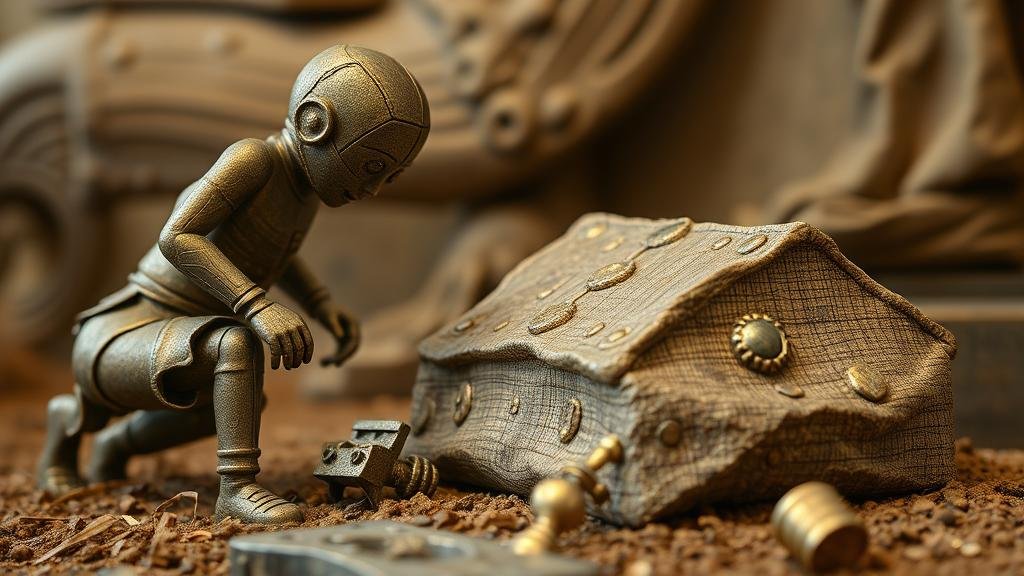Training AI Models to Identify Historical Connections Between Relics and Folklore
Training AI Models to Identify Historical Connections Between Relics and Folklore
The intersection of artificial intelligence (AI), historical artifacts, and folklore presents a fascinating frontier for researchers. This article aims to explore the methodologies involved in training AI models to discern connections between historical relics and the corresponding folklore narratives. By integrating AI technologies with historical research, scholars can uncover new insights that would be difficult or impossible to achieve through traditional methods alone.
Introduction
The study of folklore offers a rich context for understanding cultural heritage, while historical relics provide tangible links to the past. But, the relationships between relics and their associated folklore often remain unexamined due to the sheer volume of data and the complexities involved in analyzing human narratives. Recent advances in machine learning and natural language processing (NLP) allow researchers to develop AI models capable of processing vast amounts of information to unveil these connections.
Methodological Framework
Developing AI models for this purpose involves a systematic approach, combining data collection, preprocessing, model training, and evaluation. The following sections detail this methodological framework.
- Data Collection: The first step involves compiling datasets that include historical records of relics, folklore texts, and cultural documents. For example, the British Museums online collections and the Folklore Societys archives serve as rich sources of data.
- Data Preprocessing: The data must be cleaned and formatted for use in training AI models. This includes standardizing text formats, handling missing data, and employing techniques such as tokenization and stemming to prepare the text for analysis.
- Model Training: Supervised and unsupervised learning techniques are employed to teach AI models to recognize patterns. For example, the relationship between artifacts and folklore themes can be modeled using neural networks to predict connections based on historical context.
- Evaluation: Evaluating the effectiveness of the AI models includes quantitative metrics such as precision, recall, and F1 score, as well as qualitative assessments by folklorists and historians.
Integration of Natural Language Processing
Natural Language Processing (NLP) plays a crucial role in deriving meaning from the folklore texts. Techniques such as sentiment analysis and topic modeling help to identify prevalent themes in folklore that may link to specific relics. For example, if a particular relic is featured in multiple narratives that express fear or reverence, the AI can classify those emotional connections and suggest potential relationships.
Case Study: The Myth of King Arthur
To illustrate the application of AI models in studying connections between relics and folklore, consider the legendary figure of King Arthur. Numerous relics, including purported sites of Arthurian battles, exist throughout Britain.
- The legendary sword Excalibur is often depicted in folklore as a mystical object wielded by Arthur. AI models can analyze both historical accounts and modern retellings to assess the symbolism associated with swords in various cultures.
- Sites like Tintagel Castle in Cornwall, believed to be Arthurs birthplace, can be examined through AI algorithms to correlate archaeological findings with myths surrounding royalty, lineage, and legitimacy.
By applying AI to these case studies, researchers can generate comprehensive models that elucidate the connections between physical relics and their cultural narratives, enriching our understanding of history and folklore.
Challenges and Limitations
Despite the promising capabilities of AI models, several challenges and limitations exist:
- Data Quality: The availability of high-quality, annotated datasets can limit model performance. Historical documents may be incomplete or biased.
- Interdisciplinary Collaboration: AI implementations often require collaboration between historians, folklorists, and computer scientists. Misalignments in goals and methodologies can hinder progress.
- Complexity of Folklore: Folklore often consists of fluid narratives that change over time, posing challenges for data standardization and pattern recognition.
Real-World Applications
The application of AI in identifying links between relics and folklore has practical implications for various fields:
- Cultural Heritage Management: Museums can use AI models to curate exhibits that highlight connections between artifacts and their cultural narratives.
- Education: Educators can incorporate findings from AI analyses into curricula, promoting a deeper understanding of cultural narratives.
- Tourism: Heritage sites can leverage AI to enhance visitor experiences by providing contextual narratives linked to artifacts on display.
Conclusion
Training AI models to identify historical connections between relics and folklore is a pioneering endeavor that has the potential to transform our understanding of cultural heritage. While challenges remain, the successful integration of technology with historical scholarship can result in a richer appreciation of our collective past. Continued advancements in AI and interdisciplinary collaboration will be essential in fostering this field.
Actionable Takeaways
- Support the creation and curation of high-quality datasets to enhance AI learning processes.
- Encourage interdisciplinary workshops to bring together historians, folklorists, and data scientists.
- Use AI-derived insights to foster greater engagement with cultural heritage within educational and public domains.



